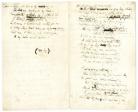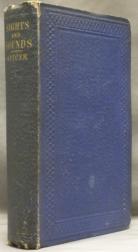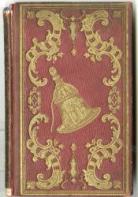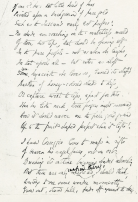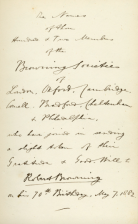Exhibition Timeline: The Brownings in Our World
Created by Joshua King on Fri, 08/14/2020 - 11:40
Part of Group:
This timeline allows you to journey through events related to exhibits in "The Brownings in Our World," an online exhibition created by students in a senior seminar on the Brownings (ENG 4364), taught by Dr. Joshua King at Baylor University in the fall of 2020. Click the navigational arrow below to proceed.
Timeline
Chronological table
| Date | Event | Created by | Associated Places | |
|---|---|---|---|---|
| The end of the month Spring 1836 to The end of the month Spring 1836 |
Elizabeth Barrett Browing meets Mary Russell MitfordElizabeth Barrett Browning met writer Mary Russell Mitford on May 27th, 1836 while Ms. Mitford was visiting London. They developed a strong friendship and wrote each other hundreds of letters. Elizabeth admired the flowers Mary grew and sent as gifts and would give Mary poetic "bouquets" in return. Mary Russell Mitford is the one who gave Elizabeth her beloved spaniel Flush. |
Peyton Robinson | ||
| Autumn 1843 |
Elizabeth publishes "The Cry of the Children" in Blackwood's MagazineElizabeth Barrett Browning publishes "The Cry of the Children," intended to raise awareness about the brutality of child labor, in Blackwood's Edinburgh Magazine's August 1843 issue, where it would attract wide attention. |
Caitlin Consolver | ||
| 1 Oct 1844 |
EBB's Publication of "A Drama of Exile"Elizabeth Barrett Browning's publication of A Drama of Exile: and Other Poems appeared on October 1, 1844 (though the title page gave the publication date of 1845). However, the English edition (titled Poems) appeared on August 13, 1844. Elizabeth's American edition of the 1844 poems was titiled A Drama of Exile: and Other Poems. The British edition was just called Poems. |
Lyssa Gonzalez | ||
| 1846 |
Elizabeth Barrett Browning writes, "The Runaway Slave at Pilgrim's Point."After moving to Italy with Robert Browning, Elizabeth Barrett Browning writes what will come to be one of her most famous poems, "The Runaway Slave at Pilgrim's Point." During this time, in 1846, Robert Browning also helped to revise this poem, signing "My EBB" at the bottom of the manuscript. |
Alexis Basso | ||
| 1850 |
Sonnets from the Portuguese was published
This is the year that Sonnets from the Portuguese was officially published. Elizabeth had written them a few years prior during her courtship with Robert in 1845 to 1846, but it wasn't until after they were married that she felt comfortable sharing them with him. His mother had passed away in 1849, and Elizabeth was able to empathize with the grief he was feeling by sharing these poems she wrote after her own extreme time of grieving over the deaths of her brothers in 1840, and he quickly encouraged her to publish them. When they were first published, she ended up pretending that they were her translations of Portuguese sonnets she had come across, mostly out of fear of how the public would recieve such personal and emotionally-charged works coming from her. |
Bridget Chagollan | ||
| 1853 |
EBB fascinated by the book called “Sights and Sounds” by Henry Spicer.Elizabeth Barrett Browning was very intrigued by the gossip going around about spiritualism in the 1850s. She wrote in a letter about a book she discovered called Sights and Sounds by British dramatist/ spiritualist Henry Spicer. |
Jes’Marie Parker | ||
| 1854 |
"A Plea for the Ragged Schools of London" is published and sold at a charity event.In 1854 both Robert Browning and Elizabeth Browning composed poems to be sold in tandem at a fundraising bazaar for London's Ragged Schools. These poems, sold in a pamphlet entitled Two Poems, were requested by Arabella Barrett Moulton-Barrett, Elizabeth's younger sister. This work came between two other major works by Elizabeth Barret Browning, "The Cry of the Children" (1843) and Aurora Leigh (1856), which also explored themes of inequality and oppresion. Between these three works, Elizabeth saw a prolific decade and a half of social activism through poetry. |
Nicholas Verghese | ||
| 1856 |
Publication of "The Liberty Bell"The Liberty Bell, in which Elizabeth Barrett Browning first published "A Curse for a Nation," was an annual collection of anti-slavery writtings written by various authors. The Boston Female Anti-Slavery Society used the publication of the Liberty Bell in order to raise money for the abolitionist cause. The Liberty Bell was often seen sold at Chirstmas fundraisers in Boston. |
Emmanuel Arredondo | ||
| 11 Oct 1864 |
Elizabeth Barrett Browning transcribes Robert Browning's "A Face"The pictured manuscript was copied out by Elizabeth Barrett Browning, perhaps around the time that Robert Browning gave it to Emily Patmore in 1852. Robert Browning ultimately corrected A Face around 1864 before publishing the poem, and then later gave it to a friend, Mrs. Fitzgerald, in 1874. |
Gabriela Aguilar | ||
| The start of the month Spring 1882 to 7 May 1882 |
Robert's 70th BirthdayIt was not until after his publication of The Ring and The Book in the late 1860s that Robert Browning gained popularity. As we can see, Robert was most popular near the end of his career. One of the items mentioned in the exhibit, Fredrick James Furnivall's volume of inscriptions, shows that Robert had followers from around the world. This volume was given to Robert on his 70th birthday. |
Emma Wilson |


